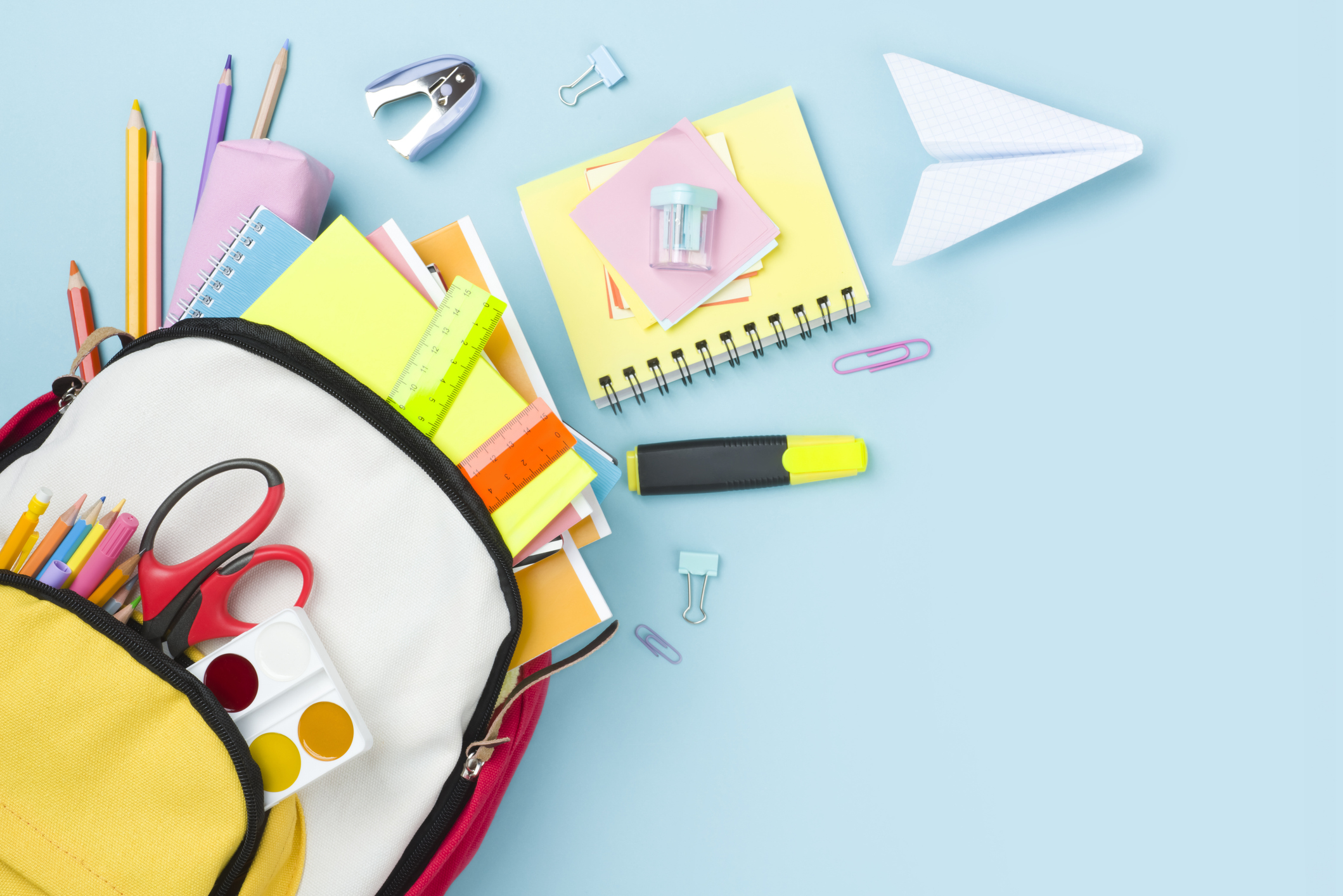10 Tips for Back-to-School Savings
Getting your kids ready for the classroom doesn't have to cost a fortune.

Buying a few pencils and notebooks for your school-age children won't put a big dent in your budget. But throw in backpacks, electronics, new clothes and more, and the cost of a back-to-school shopping trip quickly adds up. In fact, the average family is expected to spend $606 this year on these items, according to the National Retail Federation. That amount tops last year's -- $549 -- even though many Americans say they're struggling financially.
There are ways to keep back-to-school costs from spiraling out of control. The tips below will help.
1. Take inventory of what your kids have. Don't assume that your kids have outgrown all their clothes and need a new wardrobe. Take the time to make them try on what is in their closet and drawers to figure out which clothing items they really need. Then plan on buying items that can easily be mixed and matched.
From just $107.88 $24.99 for Kiplinger Personal Finance
Become a smarter, better informed investor. Subscribe from just $107.88 $24.99, plus get up to 4 Special Issues

Sign up for Kiplinger’s Free Newsletters
Profit and prosper with the best of expert advice on investing, taxes, retirement, personal finance and more - straight to your e-mail.
Profit and prosper with the best of expert advice - straight to your e-mail.
2. Set a budget. Let your children know how much they can spend so they buy only what they need. You can motivate them to keep spending under control by telling them they can keep any cash they don't spend.
3. Share the cost. Ask children who receive an allowance or who have money from a summer job to chip in -- especially if they want to buy more than your budget allows. If kids are expected to help pay for back-to-school items, they'll be more price-conscious.
4. Time your shopping right. Retailers offer some of the year's lowest prices on pens, pencils and notebooks in August. For clothing, you'll find sales on Labor Day weekend.
5.Take advantage of sales-tax holidays. Sixteen states exempt various back-to-school items from sales taxes on certain days. If you're buying big-ticket items, you might consider crossing state lines to get the tax break if your state doesn't have a tax holiday. See our guide to find out if and when your state has a tax holiday.
6. Check for student discounts. Some stores, such as Apple, offer discounts just for students. All it asks for is your name and school you are attending.
7. Sign up for e-mail or Twitter alerts from back-to-school retailers to know when their items go on sale.
8. Buy used. Textbooks are cheaper used (and even cheaper when you rent them). See How to Cut Your Textbook Costs in Half -- or More for Web sites that will help you get a deal on books. Also consider buying items such as computers refurbished rather than new.
9. Shop online. You may be more tempted to overspend when shopping in a mall, where you're surrounded by so many options, tempting displays and impulse buys in the checkout aisle. If you shop online, you can give your kids a choice of just a couple of retailers that have coupon codes-- which you can get from sites such as RetailMeNot, CouponShack.com and Coupon Sherpa -- and free-shipping offers (see FreeShipping.org).
10. Buy items in bulk to take advantage of larger discount coupons that give bigger savings for spending more. Places such as Staples offer bulk discounts and free shipping.
Profit and prosper with the best of Kiplinger's advice on investing, taxes, retirement, personal finance and much more. Delivered daily. Enter your email in the box and click Sign Me Up.

Award-winning journalist, speaker, family finance expert, and author of Mom and Dad, We Need to Talk.
Cameron Huddleston wrote the daily "Kip Tips" column for Kiplinger.com. She joined Kiplinger in 2001 after graduating from American University with an MA in economic journalism.
-
 Is Your Emergency Fund Running Low? Here's How to Bulk It Up
Is Your Emergency Fund Running Low? Here's How to Bulk It UpIf you're struggling right now, you're not alone. Here's how you can identify financial issues, implement a budget and prioritize rebuilding your emergency fund.
-
 Guide to How All-Assets Planning Offers a Better Retirement
Guide to How All-Assets Planning Offers a Better RetirementAn "all-asset" strategy would integrate housing wealth and annuities with traditional investments to generate more income and liquid savings for retirees.
-
 Forget FIRE: Why ‘FILE’ Is the Smarter Move for Child-Free DINKs
Forget FIRE: Why ‘FILE’ Is the Smarter Move for Child-Free DINKsHow shifting from "Retiring Early" to "Living Early" allows child-free adults to enjoy their wealth while they’re still young enough to use it.
-
 21 Last-Minute Gifts for Grandparents Day 2025 to Give Right Now
21 Last-Minute Gifts for Grandparents Day 2025 to Give Right NowHoliday Tips Last-minute gifting is never easy. But here are some ideas to celebrate Grandparents Day.
-
 Texas Sales Tax-Free Weekend 2025
Texas Sales Tax-Free Weekend 2025Tax Holiday Here's what you needed to know about the Texas sales tax holiday.
-
 Alabama Tax-Free Weekend 2025
Alabama Tax-Free Weekend 2025Tax Holiday Here’s everything you need to know about the 2025 back-to-school Alabama sales tax holiday.
-
 The Sweet 23: States Where Twix and Kit Kat Avoid the ‘Candy Tax’
The Sweet 23: States Where Twix and Kit Kat Avoid the ‘Candy Tax’State Taxes There’s something spooky this Halloween, and it’s not just the ghouls. Find out if your state’s sales tax takes a bite out of sweet savings.
-
 Florida Back-to-School Tax-Free Holiday 2025
Florida Back-to-School Tax-Free Holiday 2025Sales Taxes The new tax-free holiday in Florida brought month-long savings on computers, clothing and other school supplies.
-
 Five Reasons You Shouldn't Shop Amazon's Prime Big Deal Days
Five Reasons You Shouldn't Shop Amazon's Prime Big Deal DaysSmart Buying Are Amazon Prime Big Deal Days still a good deal? We'll break it down.
-
 Five Ways to Save on Vacation Rental Properties
Five Ways to Save on Vacation Rental PropertiesTravel Use these strategies to pay less for an apartment, condo or house when you travel.
-
 How to Avoid Annoying Hotel Fees: Per Person, Parking and More
How to Avoid Annoying Hotel Fees: Per Person, Parking and MoreTravel Here's how to avoid extra charges and make sure you don't get stuck paying for amenities that you don't use.